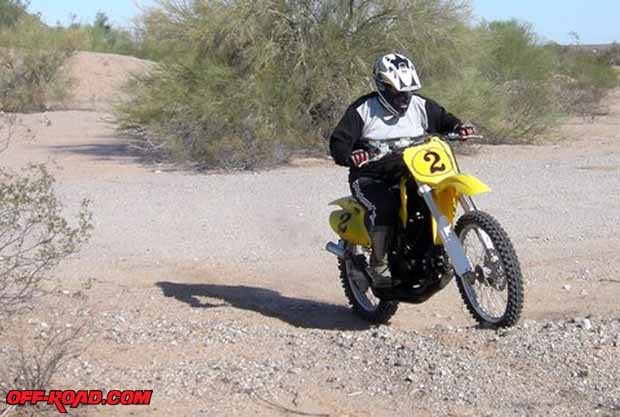
Once on the dirt, this should wrap up the series neatly. That is, if the bike works anything like we hope it should. Let's take it from the beginning. We started out the project with a Yamaha YZ 426 four-stroke motocrosser, that we bought for $900. It was a complete rolling chassis, less the blown-up four-stroke engine.
We had absolutely no trouble finding plenty of modern four-strokes with junk motors, as reliability of this new generation of bikes is sort of like a hand grenade with the pin pulled. You ride it for a few hours until it breaks, then you take it to the dealer, spend a small fortune on rebuilding it, and repeat until you get sick of the bike.
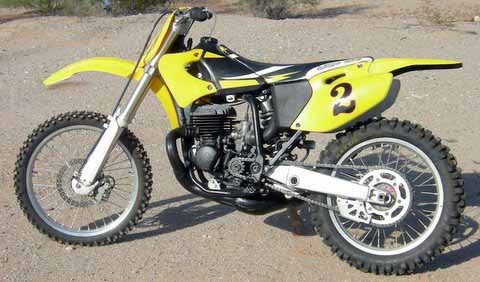
Previous Project 2-4 Articles:
This is a genuine shame since these newer wonder bikes have great suspension, super brakes, excellent wheels, a superb chassis and looks to kill for. It's too bad that we can’t have one of these bikes with a nice basic simple two-stroke motor. But wait a minute, that's exactly what we tried to do with our Project 2-4.
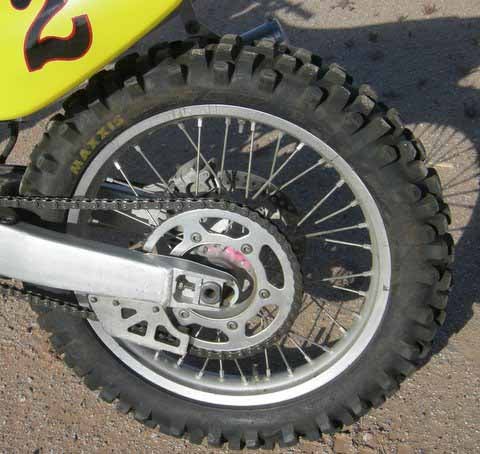
A 1979 Suzuki RM 250 motor was purchased for $225, and that included all the electrics and even a solid exhaust pipe. There was no carburetor with the bike, but we figured out any 36mm Mikuni would do the job once we got it jetted in the ballpark. We had to purchase a few items to complete the package, like a clutch cable for $7 from eBay and the clutch actuation arm for $10. Shipping for these items was about $12.
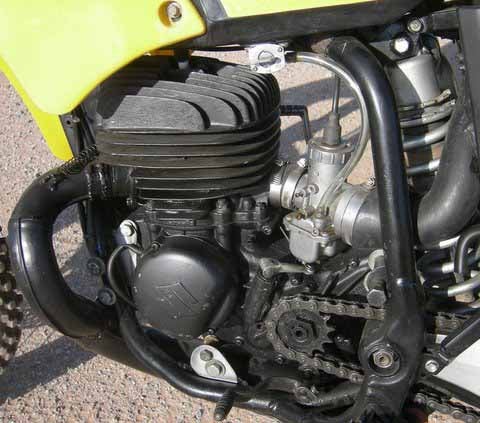
A normal YZ 426 four-stroke motocrosser weighs in at right around 250 pounds with no gas in the tank. Our Suzuki motor weighed 54.4 pounds with oil in the gearbox. The Yamaha four-stroke motor weighed well over 70 pounds. When you figure out we eliminated the radiators and all the hoses and paraphernalia that went with it, we saved a considerable amount of weight. The total weight of our bike was 224.6 pounds, a huge weight reduction from the beefy four-stroke.
If you followed along our building of the project, you know that we had more than a little bit of a problem with the carb and the jetting. We finally settled on a 36mm Mikuni with the following numbers:
Main jet … 290
Needle jet … R-6
Jet Needle … 6FJ6
Pilot jet … 60
Slide … 2.0
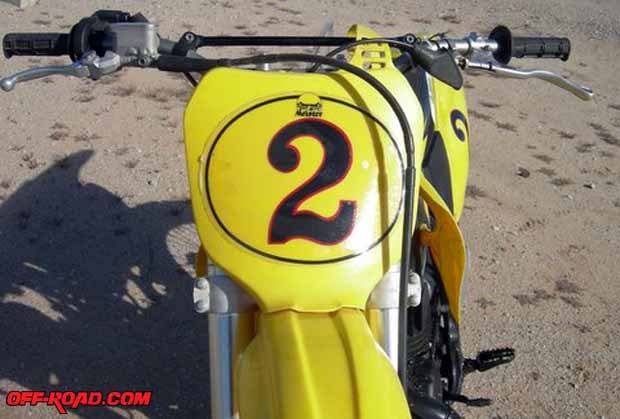
As you might know, we had to do quite a bit of adjusting on the suspension because of the much lighter weight of our completed project. We backed way off preload on the rear and hoisted the forks up to the maximum in the triple clamps until the top of the forks touched the handlebars. This made a huge difference in the height of the bike. At 5' 8 1/2” tall, I was able to touch both feet on the ground while sitting on the saddle.
The real acid test on whether the bike was successful or not was a day in the dirt. We unloaded the project bike with high hopes.
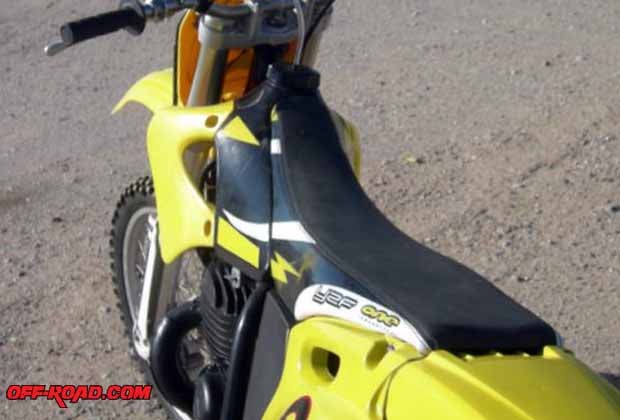
RIDING IT IN THE DIRT FOR THE FIRST TIME
When the bike was lined up for the static shots, I had to admit that it was damned good looking. It’s far better looking than a standard Yamaha 426, in my less than humble opinion. It fired up on the fourth kick and smoked like crazy. We must have killed every mosquito within the county.
Getting under way felt strange, like the bike was in second gear instead of first. Yes, it pulled strongly, but low gear seemed like it ran all the way to 35 miles per hour. Odd. A shift to second revealed that the gear ratios were very close. Second felt a lot like low. The top speed of the bike was not impressive. After a few trips through the gears, the smoking reduced and the exhaust got normal.
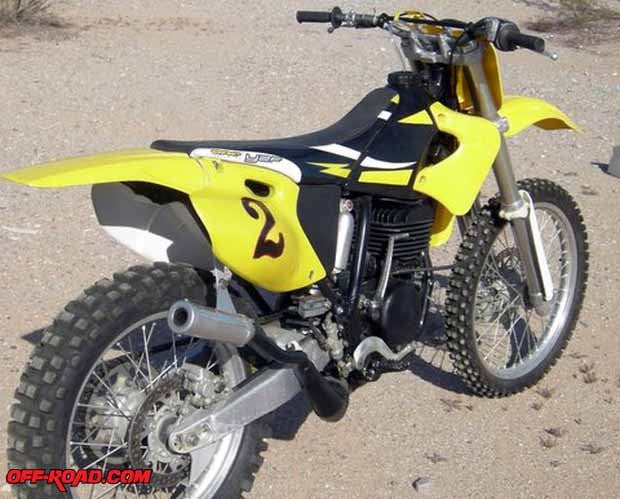
Stock gearing with the RM250 was 14-tooth countershaft and a 49-tooth rear.Luckily, the YZ426 came equipped with a 49-tooth rear sprocket, so we were OK there.It still felt like we should go one tooth less on the countershaft sprocket. The power was all low end and midrange and flattened out early on top. We recalled the advice of Suzuki Don, the man who sold us the motor: “You should run a 38 mm carb instead of the stock 36 unit. With the bigger carb, the motor revs out a whole lot better.”
Good advice. As it is, the power hits hard and abrupt down low and had a healthy midrange, but it does sign off way too early. For motocross use, you could run the 14/49 gearing, but for trail riding, you would probably feel more comfortable with two more teeth on the rear sprocket.
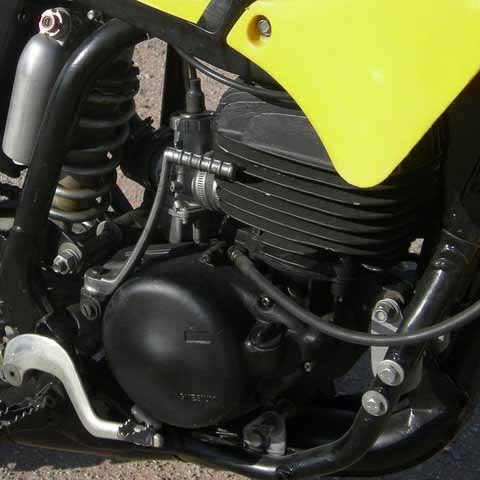
Speaking of motocross, I have no idea of what class this bike would fit in. If you ride in the Senior (over 40) class, then it’s no problem, because most organizations let you run any sized bike and just go by skill levels or age groupings. If you’re younger, you would have to run in the 250 class. Here, the bike has nice, friendly power, but certainly not as much as a modern two-stroke 250. Taking Suzuki Don’s word for it, once you put the larger carb on, the power is competitive. As is, the completed bike is fun to ride, should prove to be reliable, has superb suspension, brakes, wheels and other modern components.
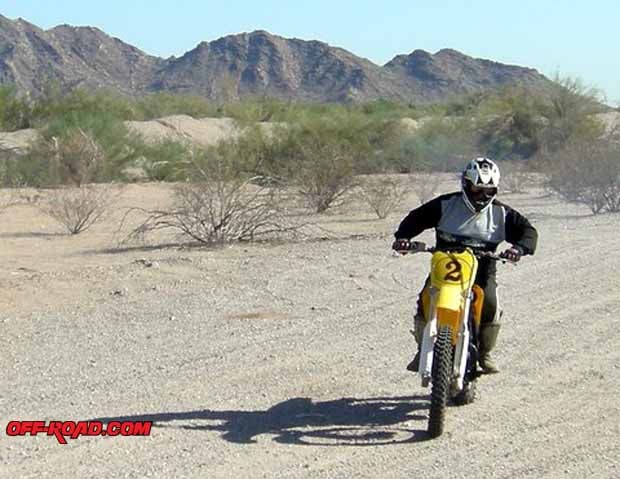
Handling-wise, Project 2-4 is not what I would call dialed in yet. Because I’m only 5’ 8 1/2” tall, I had to back off the preload on the YZ shock to get the bike to settle down. This left the forks sitting too high and the front end pushed badly in the corners. The forks would definitely need lighter fork springs for the bike to corner properly. However, in a straight line it was pure magic, without a hint of hopping around. The suspension was truly wonderful! Those forks just ate up the bumps and the stock YZ shock was flawless.
One thing that freaked me out at first was the brakes, especially the front. Super powerful and only one finger was needed. At the rear, stopping was strong and predictable. It felt very natural sitting on the bike and nothing was in the way. We had some comments about the low pipe and potential abuse, but at its lowest point, the belly of the pipe is only about two inches lower than the frame rails and this happens very close to the rear wheel.
THE BOTTOM LINE
Was this project a success? Yes, if you consider that we ended up with a good handling, light weight, reliable bike with all sorts of modern parts for about $1150. The bike is fun to ride, draws stares everywhere it goes and was relatively easy to build. Is it a fire-breathing motocrosser? No, but it’s no slug, either. With a 38 mm carb, it should have frantic power.
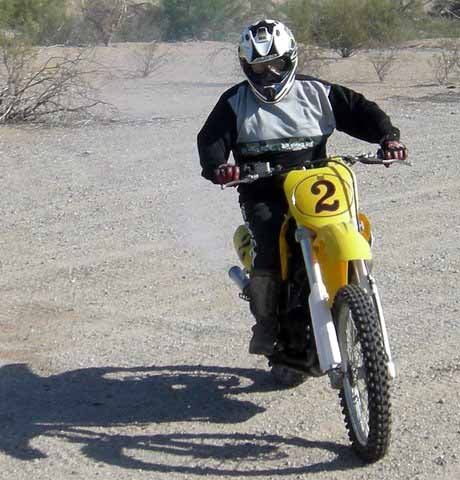
But we’re not going to tamper with Project 2-4 anymore. It’s officially now for sale (with title) for $2000 (email: superhunky@gmail.com). We have another project in the works and this one will be for folks looking a real bargain. It’ll be called Project Lowbucks and we’ll show you how to end up with a great dirt bike for a few hundred bucks. Stay tuned.
Previous Project 2-4 Articles:


 Your Privacy Choices
Your Privacy Choices